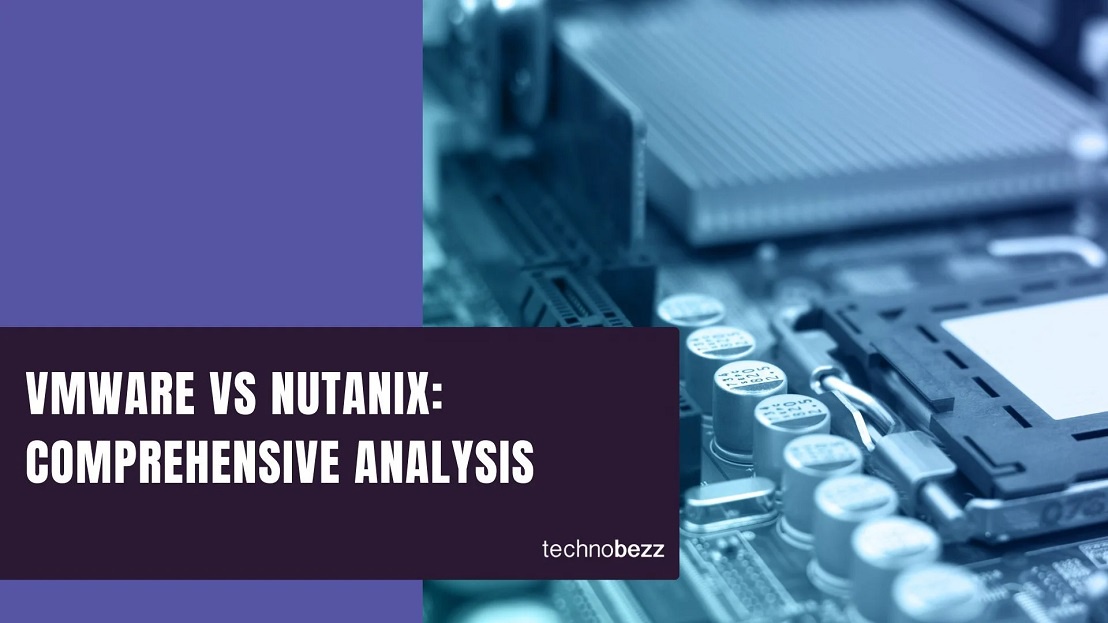To create a comprehensive and critical comparison of VMware and Nutanix, we must delve into several key areas that highlight both companies' strengths and weaknesses. VMware, a global leader in cloud infrastructure and digital workspace technology, accelerates digital transformation by enabling unprecedented freedom and flexibility in how customers build and evolve IT environments. On the other hand, Nutanix specializes in hyper-converged infrastructure (HCI) solutions, simplifying data center operations with software-defined storage and computing.
Background and Core Offerings
VMware, founded in 1998, quickly became a significant player in the virtualization market. Its main offerings include VMware vSphere, a leading server virtualization platform; VMware NSX, a network virtualization and security platform; and VMware vSAN, a software-defined storage product.
Nutanix, founded in 2009, revolutionized the data center with its HCI technology, making it easier to deploy, manage, and scale. Its flagship product, Nutanix Acropolis, offers HCI software that includes virtualization, storage, and network services.
Performance and Scalability
VMware has a proven track record in high-performance environments, supporting a broad range of applications and workloads. It is known for its ability to scale both vertically and horizontally, catering to enterprise needs effectively.
Nutanix also offers excellent performance, particularly in HCI environments. Its web-scale architecture ensures that resources are efficiently used, and scalability is as straightforward as adding more nodes to the cluster. However, in terms of raw performance metrics and scalability options, VMware often edges out, especially in highly complex or large-scale deployments.
Management and Ease of Use
Nutanix prides itself on its consumer-grade management interface, Prism, which simplifies data center operations. It integrates management tasks into a single, intuitive interface, making it easier for organizations to manage their infrastructure.
VMware counters with vCenter Server, a robust management platform for vSphere environments. While vCenter offers comprehensive tools and features, it may present a steeper learning curve than Nutanix Prism, particularly for organizations new to VMware's ecosystem.
Cost Considerations
Cost is a critical factor for many organizations. Nutanix often positions itself as a cost-effective alternative to traditional infrastructure solutions, particularly with its all-in-one software approach that can potentially lead to lower hardware costs.
VMware, while potentially more expensive upfront due to licensing and the need for additional products to match Nutanix's all-in-one offering, argues that its solutions offer better long-term value through operational efficiencies, scalability, and performance.
Ecosystem and Integration
VMware boasts a vast ecosystem, with extensive support for third-party integrations, plugins, and a vast marketplace of solutions developed by VMware and its partners. This extensive ecosystem ensures that VMware can fit into virtually any IT environment.
Nutanix, while having a smaller ecosystem, focuses on deep integration within its offerings and has been expanding its partnerships and integrations. Its HCI technology is highly compatible with various platforms, but it may not match VMware's breadth of integration capabilities.
Conclusion
Choosing between VMware and Nutanix depends on an organization's specific needs, budget constraints, and long-term IT strategy. VMware offers unparalleled scalability, performance, and an extensive ecosystem, making it suitable for complex, large-scale environments. Nutanix stands out for its simplicity, cost-effectiveness, and intuitive management, ideal for organizations prioritizing ease of use and straightforward scalability.
Ultimately, a critical comparison between VMware and Nutanix does not yield a clear winner but highlights each's unique strengths and considerations. Organizations should carefully assess their priorities, existing IT infrastructure, and future plans when deciding between these two powerful platforms.


No comments yet